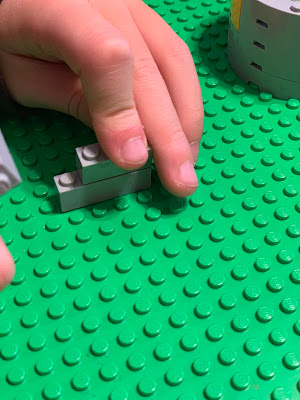Children's fine or small motor skills develop at a different rate, like any skill. As a generalization, boys fine motor skills tend to strengthen later than girls. We have all noticed children struggling with holding a pencil, coloring, cutting, and especially with handwriting.
Here is a diagram of pencil holds and ages children move through the stages. But what happens when a five or six year old is still in the digital grasp stage? How do you help a child that is not comfortable trying a tripod grasp?
Pencil Grip Holders can really help guide a child into the correct grasp but it is not an end all be all for every child. To truly build that fine motor skill children need to strengthen the muscles in their hands. The best way to strengthen the hand muscles is to give children time to PLAY with their hands!
Building with LEGOS
Play with Play-doh
Providing opportunities for children to use their hands will strengthen the muscles in their hands. Providing playtime is the most important thing you can do for your students or children! They must be able to provide pressure, manipulate, and stretch fingers.






Comments
Post a Comment